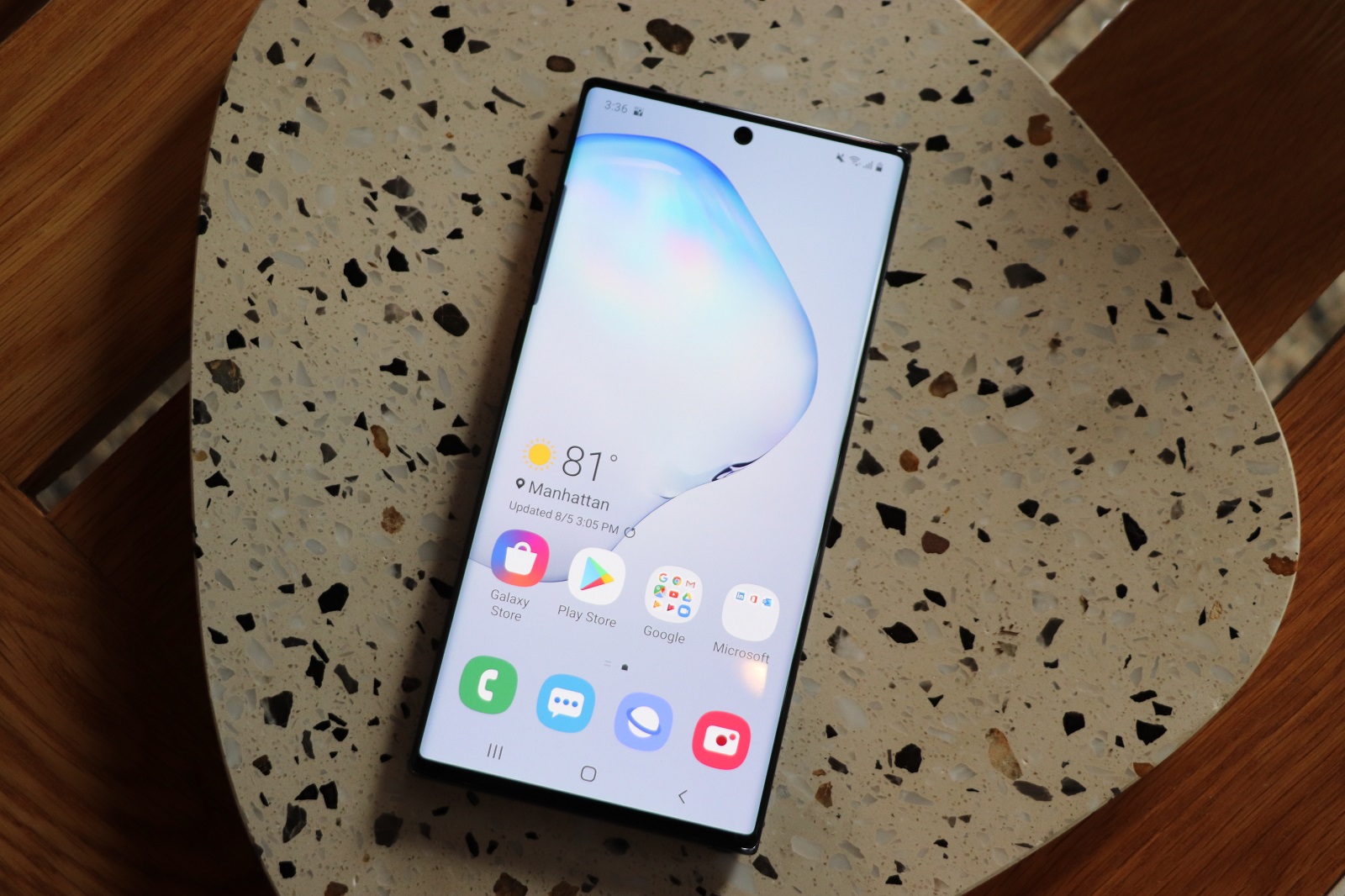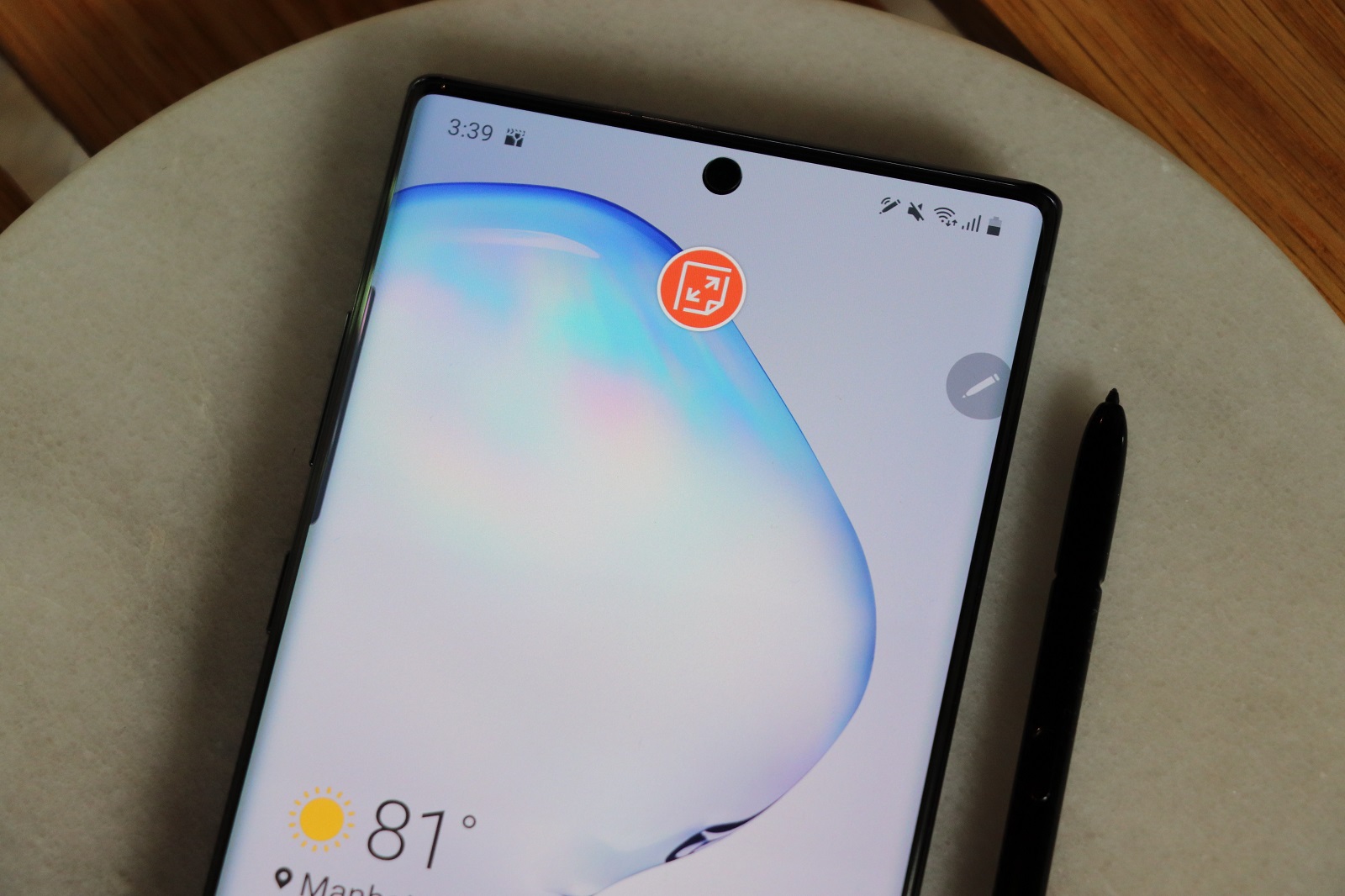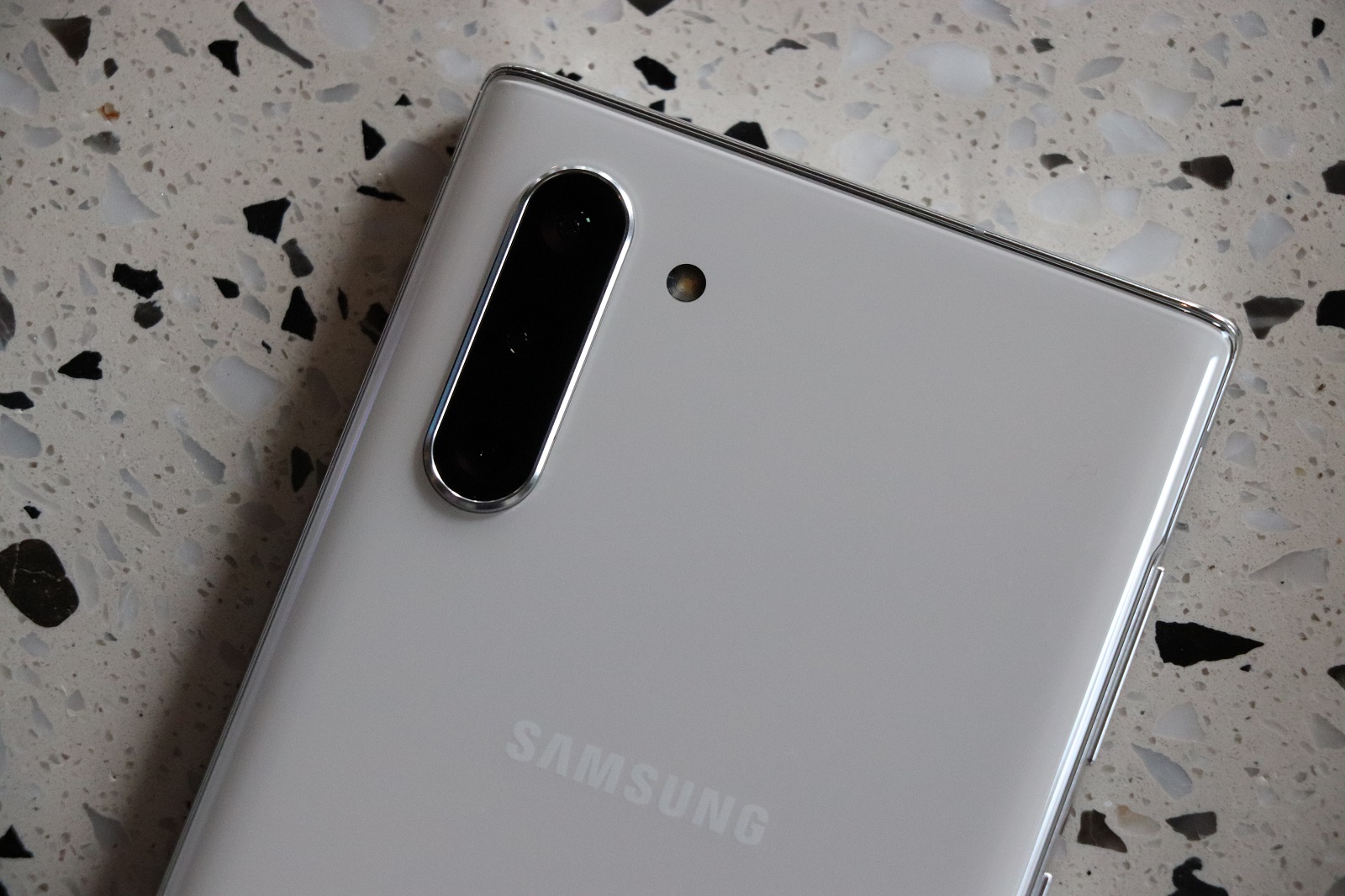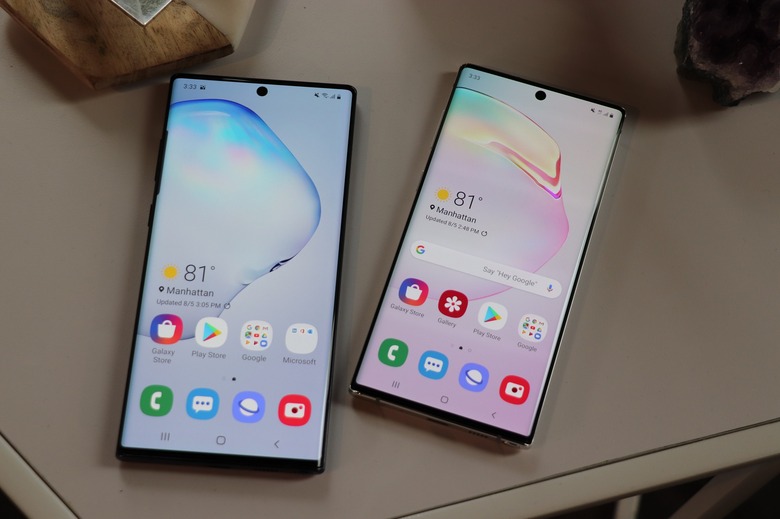Samsung's Galaxy Note 10 And Note 10+ Build Upon The Galaxy S10's Killer Design Overhaul
Samsung changed the landscape of the smartphone industry earlier this year when it debuted the Galaxy S10 and Galaxy S10+. With their Infinity-O displays, ultrasonic fingerprint scanners, and up to three rear cameras, Samsung's latest flagships truly felt like the future of the smartphone. So how would the company top itself just months later with the inevitable release of the next Galaxy Note? Or would it be better off not fixing what isn't broken?
Based on my limited time with both the Galaxy Note 10 and Galaxy Note 10+, Samsung opted to split the difference, tinkering with their design and adding a few features while keeping the spirit of the Galaxy S10 intact. The result is a smartphone that doesn't really feel like a necessity for power users the way some Note models have in the past, but should satisfy Samsung fans looking for more power and screen real estate.
If you have spent any time with the Galaxy S10 or Galaxy S10+, you should have a pretty good idea of what the new Note line has to offer. The Infinity-O display with its ultrasonic fingerprint scanner returns, but the front-facing camera has moved to the center of the screen. Samsung wanted the design to be more balanced than it was on the Galaxy S10, and while the hole-punch is more visible as a result, I found the placement to be an improvement.

The camera placement has also changed on the rear of the phone, and while Samsung has once again included a triple-camera array (not the quad-camera setup some early rumors suggested), the array has been moved from the center of the back panel to the top-left corner. It's also vertical instead of horizontal, and, much like the front-facing camera, looks sleeker as a result, at least from my point of view.
There are a few major Note-centric changes for this generation, though, including the fact that Samsung is offering two separate models for the first time in the line's eight-year lifespan. The standard Galaxy Note 10 will feature a 6.3-inch dynamic AMOLED display, 8GB of RAM, 256GB of internal storage (but no microSD card slot), and a 3,500mAh battery. Meanwhile, the Galaxy Note 10+ comes equipped with a 6.8-inch display, 12GB of RAM, 512GB of storage (with microSD card support), and a 4,300mAh battery. There will also be a 5G version of the Note 10+, but other than the 5G support, it won't differ in any meaningful way from the 4G version.

Another significant upgrade for the Note line is the redesigned S Pen, which is now capable of performing a variety of "Air actions." These are gesture controls that support many of the phone's native apps, including the Camera, Gallery, and videos playing on the phone. I got to test a few of these, including scrolling through camera modes by swiping left and right with the S Pen, zooming in or out by spinning the pen clockwise or counterclockwise, and flipping back and forth from the selfie camera by swiping up and down. I don't know how practical any of these Air actions will end up being in day-to-day use, but they were all fairly intuitive and worked consistently.
If you've ever made use of Samsung's DeX software, you'll be pleased to know that the new Samsung DeX for PC is easier to use than ever before. With nothing but a USB cable, you can use DeX to drag and drop files between your phone and PC (or Mac) without having to lose access to either device. Plus, it's all protected by Samsung Knox, so once you disconnect, you know that you're not leaving any data behind.

While Samsung admits that Note users are more concerned about battery life than they are about the camera, the main camera of the Galaxy Note 10 is no slouch, and a few new features such as live focus video, a zoom-in mic that focuses on the audio within the frame, and enhanced super steady functionality that even works in Hyperlapse mode should give the Note 10 a worthy boost over its predecessor in the camera department.
And speaking of batteries, the Note 10+ supports 45W "Super Fast Charging," which Samsung claims can give you a full day's worth of charge in just 30 minutes. Unfortunately, only the bigger model supports this feature, and you have to get a 45W charger separately, so not all Note 10 users will be taking advantage of this feature.
Samsung will open preorders for the Galaxy Note 10 and Note 10+ on August 8th at 12:01 AM ET, with the phones set to begin shipping on August 23rd. Both the Note 10 and Note 10+ will be available in Aura Glow, Aura White, and Aura Black, with a fourth Aura Blue color option available exclusively for the Note 10+ at Best Buy and Samsung.com. Pricing starts at $949.99 for the Note 10 and $1,099.99 for the Note 10+. As for the Galaxy Note 10+ 5G, Verizon will be the only carrier to get the 5G phone for a limited time during the launch period.
